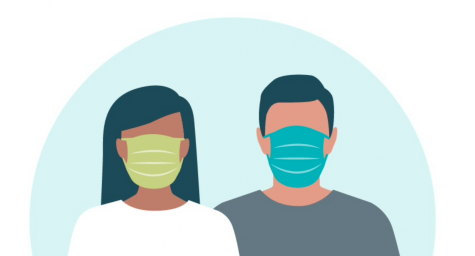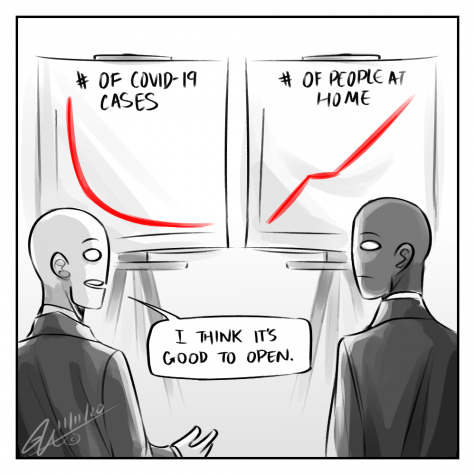Reality Over Normalcy: The Argument Against Hybrid Learning
November 12, 2020
I was one of those people that looked forward to going to school. I enjoyed the morning routine, meeting up with my friends in the cafeteria, and greeting my teachers in the hallway. I still reminisce about the normalcy of last year, especially as a Senior. As much as I miss my normal routine, it would be naive to ignore the reality of our situation. Amidst a pandemic, it seems foolish to meet in large crowds, yet school seems to be the exception.
The administration of D214 and Wheeling High School is doing the best that they can to follow COVID safety guidelines. They’re regulating classroom sizes, making masks mandatory, and performing temperature checks. Yet, the question remains: Is that enough to truly ensure the safety of the students and staff? I applaud the administrators for all the work they put into creating a safe environment, but it’s unrealistic to say that it’s a COVID-free environment. If masks and temperature checks alone were enough to prevent the spread of COVID, the U.S wouldn’t be in such a dire situation. The matter of fact is, masks and temperature checks are the bare minimum protection. It’s better to wear a mask than to not wear one, it’s better to perform temperature checks than to not do them at all, yet these two things alone can not prevent the spread of COVID.
Furthermore, the school can only control what happens within the school. Unfortunately, the biggest danger lies out outside of school. Students and staff are free to break COVID safety guidelines and thus put everyone at risk. There’s no one mandating masks, social distancing, or even small groups. Another undeniable fact is that at least some portion of hybrid learners are engaging in activities outside of school that put them at risk for COVID. What makes this situation even worse is that students tend to be asymptomatic due to their young age. A student can unknowingly have coronavirus and then spread it to their peers. Additionally, it seems unfair for teachers to put them in this situation. Students have the option to opt-out if they feel unsafe, but unless teachers are required to be in person unless they fall under special circumstances.
In a survey issued to WHS students, only 38.9% of the respondents reported that they were doing in-person learning. Whereas 36.1% of responses said they felt completely safe at school, there was 25.9% that said they didn’t feel safe at school at all, and another 33.3% that stated they only felt safe at school part of the time. It was also reported that only 19% of respondents go to school every designated in-person day in comparison to the 11.4% that reported that they don’t go that often and the 24.2% that stated they don’t go at all. One respondent wrote, “Irresponsibility kills in these times, and it’s unfortunate to say that not many students are responsible enough for me to feel safe returning to school.” This respondent couldn’t have said it better. The only way to ensure the safety of everyone is through self responsibility, but it’s apparent on a national level that not enough people are being responsible. The disregard for the danger of COVID is what puts everyone as a whole at risk.
It’s safe to say that everyone longs for a sense of “how things used to be.” However, with rising COVID numbers, it’s ignorant to pretend that things can just go back to normal.





